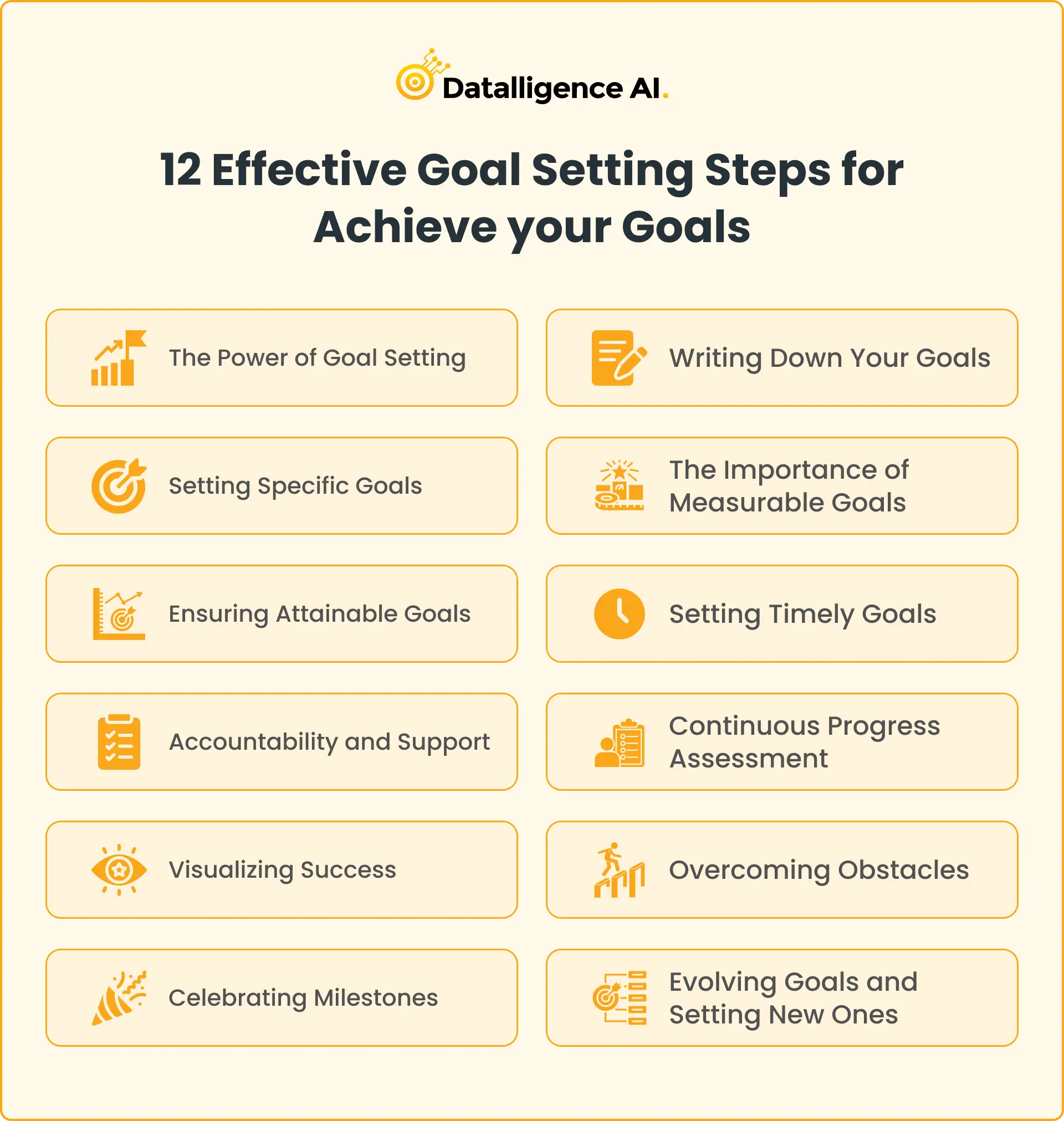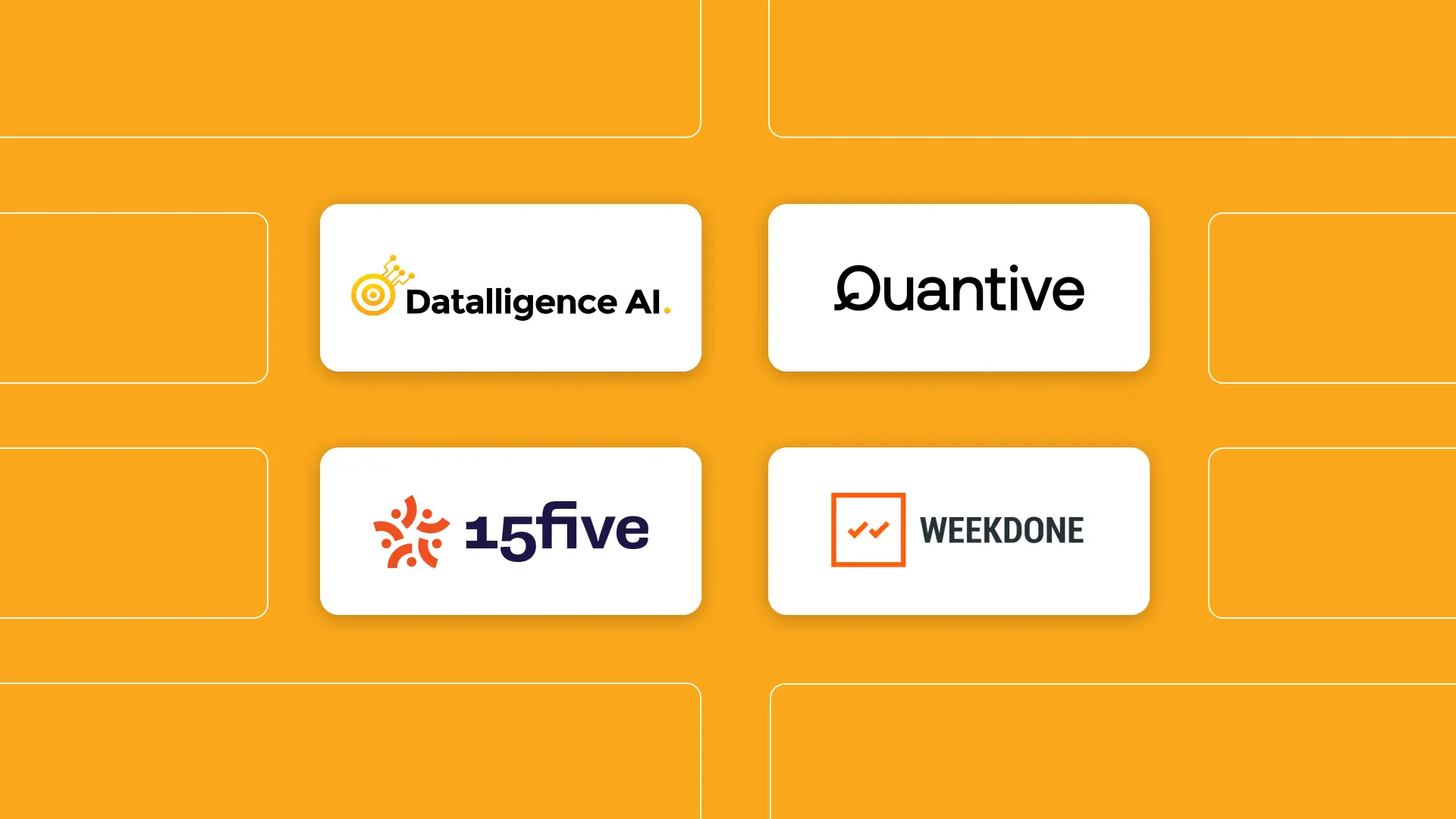Embarking on the path of personal and professional growth begins with mastering the art of goal setting. This comprehensive guide delves into the goal-setting process, offering insights on how to set meaningful objectives, the steps involved, and strategies for success.
Whether you’re aiming for career milestones or personal development, join us as we unravel the secrets behind effective goal setting, providing you with the tools to turn your aspirations into actionable plans with measurable outcomes.
Let’s navigate this transformative journey together and unlock the potential for success that lies within the realms of effective goal setting.
What is goal setting?
Goal setting is a purposeful and explicit process that involves identifying new objectives, skills, or projects an individual or organization wants to achieve. It goes beyond simply deciding to start a new habit or activity; instead, it requires careful planning, motivation, and discipline to accomplish specific outcomes.
The process of goal setting is fundamental to personal and professional growth. It provides a framework for action and direction, helping individuals and organizations identify what needs to be done, by when, and why. By setting clear objectives, people can focus their efforts, stay on track, and measure their progress effectively.
Research conducted by Locke and Latham has shown that goal setting is indeed very effective. Their studies revealed that working toward a goal is a major source of motivation, which, in turn, improves performance. In their 1990 work, “A Theory of Goal Setting & Task Performance,” they stressed the importance of setting goals that are both specific and challenging.
What is a goal-setting process?
A goal-setting process is a vital tool for organizations and individuals seeking to drive measurable progress and achieve desired outcomes. It offers a clear path to defining goals and outlining the steps necessary to attain these objectives. This process fosters clarity, motivation, and accountability among employees and individuals alike.
Goal setting is a powerful motivator, recognized in various clinical and real-world settings for over 35 years. According to Locke and Latham (2002), goals are “the object or aim of an action, for example, to attain a specific standard of proficiency, usually within a specified time limit.” They serve as the level of competence that individuals wish to achieve and create a useful lens through which to assess current performance.
The importance of the goal-setting process must be balanced. As Lock (2019) emphasizes, “Every person’s life depends on the process of choosing goals to pursue; if you remain passive you are not going to thrive as a human being.” This underscores the critical role that goal setting plays in personal and professional development.
Goal-setting theory, developed by Locke and Latham (1984), is based on the premise that conscious goals affect action and that conscious human behavior is purposeful and regulated by individual goals. In essence, individuals must decide what is beneficial to their own welfare and set goals accordingly.
The theory also addresses the question of why some people perform better on tasks than others. Ryan (1970) suggests that if individuals are equal in ability and knowledge, then the cause must be motivational. The simplest and most direct motivational explanation for performance differences is disparate performance goals, implying that setting and adjusting goals can significantly impact performance.
12 Effective Goal-Setting Steps for Achieving your Goals

1.The Power of Goal Setting
- Recognize goal setting as a tool to take control of your life and shape your future.
- Understand that goals are the seeds of everything you see around you, emphasizing the transformative potential of the process.
- Embrace the idea that the act of setting goals can manifest your thoughts into tangible realities.
2.Writing Down Your Goals
- Solidify commitment by writing down your goals, turning abstract aspirations goals into tangible commitments.
- Create a roadmap for success by not just stating goals but by assigning specific tasks and deadlines.
- Understand that the act of writing goals down enhances clarity, making them more concrete and achievable.
3.Setting Specific Goals
- Define goals with SMART, specific, detailed facts and events to eliminate ambiguity.
- Recognize that specificity provides a roadmap for your journey, reducing the likelihood of overlooking crucial details.
- Develop a regimen and precision in your approach by breaking down overarching goals into specific, actionable steps.
4.The Importance of Measurable Goals
- Measure progress by quantifying the outcomes of your efforts, allowing for tracking and evaluation.
- Celebrate milestones by identifying specific indicators of success—what you will see, hear, and feel when you achieve your goals.
- Break goals into measurable elements to create a sense of achievement at each step, keeping motivation high.
5.Ensuring Attainable Goals
- Aim high but be mindful of your resources, time, and experience.
- Avoid frustration by setting realistic goals that align with your current capabilities.
- Wisely plan steps and establish a timeline to ensure that your goals are challenging yet achievable.
6.Setting Timely Goals
- Ground goals within specific timeframes to create a sense of urgency and maintain momentum.
- Instill accountability and motivation through deadlines, ensuring a focused and efficient approach.
- Find a balanced approach to time constraints, avoiding unnecessary stress while maintaining a sense of urgency.
7.Accountability and Support
- Hold yourself accountable during challenges, recognizing that overcoming obstacles is an integral part of the journey.
- Share your goals with family and friends to build a support system that encourages you during difficult times.
- Seek support from others who have experienced similar challenges, leveraging their insights to propel yourself toward success.
8.Continuous Progress Assessment
- Embrace the evolution of goals as an opportunity for personal and professional growth.
- Continuously assess progress by regularly reviewing and adjusting goals based on your evolving understanding and experiences.
- Reflect on both achievements and setbacks to refine your approach, fostering a dynamic and adaptive mindset.
9.Visualizing Success
- Use visualization as a powerful technique to create a mental picture of success for each goal.
- Immerse yourself in the emotions and sensations associated with achieving your goals, reinforcing your belief in the process.
- Cultivate an optimistic mindset by regularly visualizing the successful outcomes you are striving for.
10.Overcoming Obstacles
- Develop resilience by viewing obstacles as opportunities for personal and professional development.
- Cultivate a problem-solving mindset to effectively navigate challenges and setbacks.
- Break down larger goals into smaller, manageable tasks, making the journey more achievable and less overwhelming.
11.Celebrating Milestones
- Acknowledge and reward yourself for each step of progress, no matter how small.
- Celebrate milestones to maintain motivation and recognize the positive aspects of your goal-setting journey.
- Share your achievements with loved ones, creating a supportive environment that encourages continued success.
12.Evolving Goals and Setting New Ones
- Embrace changing aspirations as a natural part of personal and professional growth.
- Use the lessons learned from previous achievements and setbacks to inform and shape new goals.
- Recognize goal setting as an ongoing, iterative process of self-improvement and continuous learning.
Different goal-setting frameworks
Goal setting frameworks provide structured approaches to help individuals and organizations define and achieve their objectives. These frameworks offer guidance on creating clear, actionable goals and tracking progress effectively. Here are some popular goal setting frameworks:
- SMART Goals: This widely used framework ensures goals are Specific, Measurable, Achievable, Relevant, and Time-bound. For example, a writer might set a SMART goal to “write a 50,000-word fiction novel by December 31st of next year” instead of a vague goal like “write a book.”
- OKRs (Objectives and Key Results): Used by companies like Google and LinkedIn, OKRs involve setting an objective and defining key results to measure success. For instance, a startup CEO might set an objective to “increase revenue by 50% in Q3” with key results such as “acquire 100 new customers” and “increase customer retention rate by 10%.”
- Locke and Latham’s 5 Principles: Based on research, this framework emphasizes goal clarity, challenge, commitment, feedback, and task complexity. A project manager could use this approach to set specific goals for team members, such as “complete project X in 45 days with a 10% increase in efficiency.”
- BHAGs (Big, Hairy, Audacious Goals): This framework encourages setting highly ambitious goals that push individuals or organizations outside their comfort zone. An entrepreneur might set a BHAG to “build a billion-dollar company within the next decade.”
- One Word Goal Setting: This simple framework involves choosing a single word to represent the overarching goal or theme for the year. For example, someone might choose “health” as their word and focus on improving physical and mental well-being throughout the year.
- Balanced Scorecard: Developed by Robert Kaplan and David Norton, this framework helps organizations track performance across four perspectives: financial, customer, internal business processes, and learning and growth. A manufacturing company could use this approach to set goals and metrics for quality, efficiency, customer satisfaction, and financial performance.
- WOOP (Wish, Outcome, Obstacle, Plan): This framework focuses on setting realistic goals by identifying potential obstacles and developing plans to overcome them. A sales team might use WOOP to set a goal of increasing monthly sales figures, identifying obstacles like difficulty reaching decision-makers, and creating a plan to overcome these challenges.
These goal setting frameworks offer various approaches to help individuals and organizations achieve their objectives. By selecting the most appropriate framework for their needs, people can increase their chances of success in both personal and professional endeavors.
Example of Goal Setting Process
You can use the following models of effective goal-setting to help you create realistic goals for yourself:
Example 1 : Business Goal: Increase Monthly Sales Revenue by 15% in the Next Quarter
Actionable Steps:
- Client Outreach:
- Conduct targeted email campaigns and make 25 sales calls weekly.
- Networking and Relationship Building:
- Attend two industry events weekly.
- Connect with five new business professionals on LinkedIn weekly.
- Customer Engagement:
- Implement a customer feedback survey.
- Enhance customer service skills through training.
- Cross-Selling and Upselling:
- Identify opportunities and train the team for proactive selling.
Check-ins:
- Weekly check-ins on Mondays at 10 a.m.
- Monthly reviews and quarterly assessments.
Metrics and Recognition:
- Analyze sales data, customer feedback, and employee performance.
- Adjust strategies, recognize achievements, and set new targets accordingly.
Example 2: Business Goal: Increase Customer Retention Rate by 20% in the Next Quarter
Actionable Steps:
- Customer Feedback Analysis:
- Analyze feedback from current customers to identify areas for improvement.
- Personalized Customer Outreach:
- Implement a personalized outreach program to connect with existing customers, addressing their needs and concerns.
- Loyalty Program Launch:
- Develop and launch a customer loyalty program with exclusive perks for long-term clients.
- Training for Customer-Facing Teams:
- Provide additional training to customer service and sales teams on building strong customer relationships.
Check-ins:
- Weekly check-ins on Fridays at 11 a.m.
- Monthly reviews and quarterly assessments.
Metrics and Recognition:
- Conduct monthly customer satisfaction surveys to gauge sentiment.
- Evaluate the effectiveness of personalized outreach efforts.
- Monitor participation and engagement in the loyalty program.
- Recognize and reward employees who excel in customer retention efforts.
Continuous Improvement Initiatives:
- Implement continuous improvement initiatives based on feedback and lessons learned.
This goal-setting process aims to enhance customer retention through proactive customer engagement, the introduction of a loyalty program, and continuous improvement based on feedback and data analysis, with regular check-ins and assessments for ongoing success.
Conclusion
As we wrap up this journey through the 12 effective goal-setting steps, we trust you’ve gained valuable insights for your personal and professional growth. Your path to success is unique, and filled with opportunities for learning and achievement.
If you have questions or seek personalized guidance, don’t hesitate to talk to our experts. We’re here to support you on your journey to turning aspirations into reality. Your success matters, and our experts are ready to assist. Talk to our expert today and unlock the full potential of your goals.











